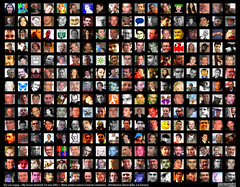Salanalytics
Sales People: How much time do you spend with your clients discussing numbers, data or research?
Analytics & Quant People: How much time do you spend interfacing with clients?
The line between being a sales person and being an analytics/quant person is fading and fading fast.
Technology has enabled anyone and everyone with access to huge amounts of information at any given point of time and more importantly, has allowed them to access this information in real time. As a sales person, this makes differentiation that much more important especially in these tough economic times. How are you different from your competitors? What data can you not only show me, but what does that data mean?
In these situations, the tendency has typically been to rope in analytical individuals that are best suited to answer these questions. These are the individuals that are experts on the data and interpretation relevant to clients and their organizations.
Even so, can these individuals convey the data in the capacity needed to maintain, build and grow relationships? Furthermore, can the “relationship” people convey the data needed to grow business and establish meaningful credibility with a client?
I recently had conversations with a close friend of mine who works in the finance industry. His description of the sales-quant/analytics relationship relates directly to my experiences in the digital media industry. Numbers and sales are becoming one and it is becoming increasingly important to have skill sets in each discipline.
This begs the question…Is it better to be an expert in sales with the ability to understand data and analysis? Or, is it better to be an expert in data analysis, interpretation, and reporting with the ability to convey an overall, hierarching theme?
Both are critical and both are necessary in today’s environment. Today, you must become a salanalytic (Sales + Analytics = Salanalytics) but if you had to choose one skill set, which one would it be?


![Reblog this post [with Zemanta]](https://img.zemanta.com/reblog_e.png?x-id=9634fcaa-d309-4c96-8bc8-e8d414e8d8a6)

![Reblog this post [with Zemanta]](https://img.zemanta.com/reblog_e.png?x-id=fc53107e-2c49-4409-bdc9-a12738af44d4)



